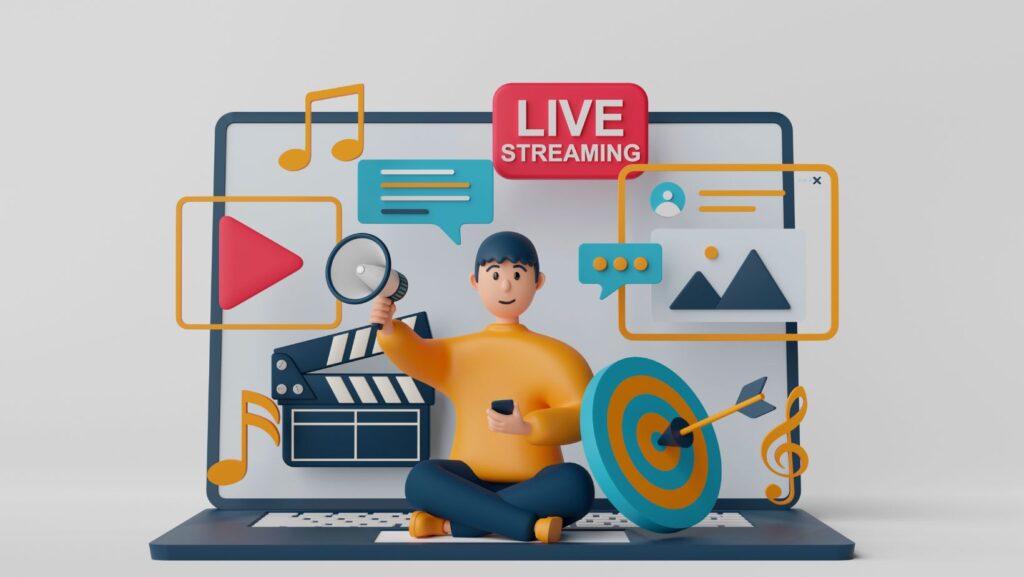Mastering Content Repurposing: 9+ Key Steps With Action Plan

The art of creatively recycling and adapting existing content into multiple formats or for different platforms is known as content repurposing.
Content repurposing is all about capturing the essence of what you’ve already made and repurposing it in new and unique ways.
This may entail converting a blog post into a podcast episode, a webinar into a series of social media posts, or an e-book into an infographic. The options are limitless.
It’s not just about getting more mileage out of your existing content; it’s also about increasing your reach and engagement.
You can reach new audiences who prefer various content formats or use different platforms by reusing content.
It also enables you to emphasize your message by delivering it in a variety of formats, and is a terrific approach to maximize the return on the time and money you’ve invested in developing original content.
A content repurposing strategy is a plan that details how you intend to repurpose current material.
Content repurposing entails determining which content to repurpose, deciding on new formats, developing the repurposed content, and effectively disseminating it.
This article will take you step by step through the process of developing a successful content repurposing strategy.
Understanding Content Repurposing

Explanation of content repurposing
Repurposing content extends beyond merely publishing the same information on numerous sites.
It entails adapting the material to the medium and the audience. A complex study report, for example, could be transformed into a series of blog posts for a more casual audience, while a popular blog piece could be turned into a video instruction for visual learners.
The goal is to keep the essential message consistent while modifying the presentation.
Different forms of content that can be repurposed
Repurposing almost any type of content is possible.
The list of blog posts, articles, reports, webinars, videos, podcasts, presentations, infographics, and social media pieces is endless. User-generated content, such as customer evaluations or Q&A sessions, can also be reused.
The ideal material to repurpose is usually evergreen content that stays relevant over time, as well as high-performing content that has shown to be popular with your target audience.
Examples of successful content repurposing
Consider a corporation that does an annual industry study. The raw survey data can be transformed into a thorough report, which can then be repurposed into a series of blog entries highlighting key findings.
These blog pieces can be turned into:
- Infographics
- Social Media Posts
- Webinar
In this manner, the business maximizes the value of the original survey data while reaching a large audience across multiple channels.
The Need for a Content Repurposing Strategy

Why a strategy is necessary for content repurposing
A content repurposing strategy is required to guarantee that your efforts are targeted and effective.
Without a strategy, you risk wasting time and dollars repurposing content that doesn’t resonate with your audience or isn’t appropriate for the new format.
A strategy assists you in identifying the greatest material to repurpose, selecting the most appropriate new formats, and effectively planning your distribution to reach the proper audience.
The role of a content repurposing strategy in content marketing
A content repurposing strategy is critical in the context of content marketing.
It allows you to get more out of your content creation efforts by increasing the lifespan of your material and reaching a larger audience, and aids in the maintenance of a consistent content calendar because recycled material can cover gaps between new content pieces.
Content Repurposing can help your SEO because repurposing material expands your chances for keyword optimization and backlinking.
Benefits of having a content repurposing strategy
A content repurposing strategy has various advantages. Because you’re repurposing existing content, you can save time and money on content creation.
You may increase your reach and engagement as you adjust to changing audience preferences and platform needs.
Because repetition across multiple mediums increases remembering and comprehension, it helps strengthen your brand message.
It can also benefit your SEO because more content means more chances to rank.
Steps to Create a Successful Content Repurposing Strategy
Identifying and selecting high-performing content
The first stage in developing a content repurposing strategy is identifying and selecting the content to be repurposed.
This should be high-performing content that has shown to resonate with your target demographic.
You can find such material by reviewing your analytics to discover which articles have received the most interaction, shares, or conversions.
Consider evergreen content as well, which remains relevant over time.
Analyzing target audience and platforms
Analyze your target audience and platforms next. Different audiences may appreciate different sorts of material, and different platforms may require different types of content.
Younger audiences on social media may prefer video material, whereas professional audiences on LinkedIn may prefer lengthy articles.
Understanding your target and platform needs can assist you in determining the best new formats for your repurposed content.
Deciding on the new content format(s)
You can decide on new content formats once you’ve determined your target audience and platforms. Consider the original content’s nature and how it can be best altered.
A thorough blog piece, for example, may be transformed into a series of short videos, an infographic, or a podcast episode.
The purpose is to modify the content such that it provides value and fits the new format, not just duplicate it.
Creating the repurposed content
The following stage is to develop the reused material. This goes beyond simply copying and pasting the source information. You must adjust the material to the new format and platform.
This could include revising text, designing new graphics, recording audio or video, and so forth. Maintain the original content’s fundamental theme, but don’t be hesitant to add new ideas or opinions.
Promoting and distributing the repurposed content
After developing the reused content, you must properly promote and distribute it. This entails distributing the material on the proper platforms, at suitable times, and in the appropriate manner.
During peak engagement periods, you could release a video on social media, post an infographic on your blog with relevant SEO keywords, or send a podcast episode to your email list with a compelling call to action.
Measuring the success of the repurposed content
It is critical to track the success of your reused material. This can assist you in understanding what works and what does not, allowing you to fine-tune your plan over time.
Depending on your objectives, you may want to quantify success in terms of engagement, shares, conversions, or SEO rankings.
Track these indicators using analytics tools, and don’t be hesitant to experiment and learn from your results.
Best Practices for Content Repurposing

Tips for effective content repurposing
Prioritize quality over quantity when it comes to content reuse. It is preferable to produce a few high-quality pieces of recycled content rather than a large amount of low-quality content.
Keep your audience in mind at all times. Make certain that your reused material is useful and relevant to them. Remember to optimize your recycled material for SEO in order to maximize its visibility and reach.
Common mistakes to avoid in content repurposing
There are a few basic pitfalls to avoid when repurposing content.
- The first is repurposing information without a defined strategy or goal in mind. Always keep a goal in mind, whether it’s to reach out to a new audience, improve SEO, or emphasize a crucial point.
- Another common blunder is repurposing content without adapting it to a new format or platform. Make sure your repurposed material meets the needs and audience expectations of each format and platform.
- Finally, avoid repurposing content for the sake of repurposing. If the original content did not perform well or is no longer relevant, repurposing may not be worthwhile.
Tools and resources for content repurposing
- There are numerous tools and resources available to assist in content repurposing. Canva, for example, may assist you in creating visuals for infographics or social media postings.
- Video editing software such as Adobe Premiere Pro might assist you in converting a blog article into a video. Anchor, a podcasting tool, may assist you in converting a webinar into a podcast episode.
- Analytics tools such as Google Analytics can also assist you in tracking the performance of your repurposed material.
Case Studies of Successful Content Repurposing Strategies
Consider the scenario of a software business that successfully turned a series of blog entries into an e-book.
The blog entries covered several facets of a complicated technology topic. The company was able to reach a wider audience and position itself as an authority on the subject by putting them into an e-book.
Another example is a fitness influencer who turned a series of training videos into Instagram postings.
Each post included a short video clip, a description of the exercise, and recommendations for good form.
This enabled the influencer to reach a larger Instagram audience, enhance engagement, and drive traffic back to the complete videos.
A business podcast that recycled its episodes into blog posts and social media material is a third example.
Each podcast episode was transcribed and transformed into a full blog article, complete with key topics underlined and links to other resources.
Short snippets from the episodes, as well as quips and observations, were also posted on social media.
This method assisted the podcast in reaching a larger audience and increasing traffic to its website.
Action List

Action List For A Blog To Content Repurposing
Identify High-Performing Blog Posts: Use your analytics tools to identify which of your blog posts have the highest engagement, shares, or conversions. These are good candidates for repurposing.
Determine Suitable Formats: Decide on the new formats that would be suitable for repurposing your blog content. This could be videos, podcasts, infographics, social media posts, eBooks, webinars, etc.
Analyze Your Audience: Understand the preferences of your audience. Different segments of your audience may prefer different formats. Tailor your repurposed content to meet their preferences.
Create a Content Calendar: Plan out when and where you will publish your repurposed content. This will help you maintain a consistent content schedule.
Repurpose the Content: Start creating the repurposed content. Remember to adapt the content to suit the new format and the platform. This may involve rewriting text, creating new visuals, recording audio or video, etc.
Optimize for SEO: Don’t forget to optimize your repurposed content for SEO. This includes using relevant keywords, adding meta descriptions, and creating SEO-friendly URLs.
Promote Your Repurposed Content: Share your repurposed content on the appropriate platforms. Use email marketing, social media, and other promotional strategies to reach your audience.
Engage with Your Audience: Keep an eye out for comments and criticism on your recycled content. Respond to comments and handle feedback to engage your audience.
Measure Performance: Use analytics tools to measure the performance of your repurposed content. Look at metrics like engagement, shares, conversions, and SEO rankings to assess the success of your content repurposing efforts.
Refine Your Strategy: Based on your performance metrics, refine your content repurposing strategy. Learn from what works and what doesn’t, and continuously improve your strategy.
Final Thoughts

A content repurposing approach is an effective content marketing technique. It enables you to increase the value of existing content, reach a larger audience, and reinforce your marketing message.
It can help you save time and resources, enhance engagement, and improve your SEO. You can turn your old material into a treasure trove of new chances with a clear approach and a little imagination.
Why not experiment with content repurposing?
Begin by finding your best-performing content and thinking about how it may be translated to different formats or platforms.
Be creative. The idea is to offer value and reach more people, not just repeat content.
FAQ
Q: What is content repurposing?
A: Content repurposing is the process of taking existing content and transforming it into different formats or adapting it for different platforms. This could mean turning a blog post into a podcast episode, a webinar into a series of social media posts, or an e-book into an infographic.
Q: Why should I repurpose content?
A: Repurposing content allows you to maximize the value of your existing content, reach a wider audience, reinforce your brand message, and improve your SEO. It also saves you time and resources in content creation, as you’re leveraging content that you’ve already created.
Q: What types of content can be repurposed?
A: Almost any type of content can be repurposed, including blog posts, articles, videos, podcasts, webinars, reports, presentations, infographics, and social media posts. Even user-generated content, like customer reviews or Q&A sessions, can be repurposed.
Q: How do I choose which content to repurpose?
A: The best content to repurpose is usually high-performing content that has proven to be popular with your audience, as well as evergreen content that remains relevant over time. You can identify such content by looking at your analytics to see which pieces have the highest engagement, shares, or conversions.
Q: How do I repurpose content?
A: Repurposing content involves identifying the content to repurpose, deciding on the new format(s), adapting the content to the new format and platform, promoting the repurposed content, and measuring its success. It’s important to have a clear strategy and to focus on adding value and meeting audience preferences.
Q: What are some common mistakes to avoid in content repurposing?
A: Common mistakes in content repurposing include repurposing content without a clear strategy or purpose, not adapting the content to the new format or platform, and repurposing content that didn’t perform well or is no longer relevant.
Q: How can I assess the effectiveness of my content repurposing efforts?
A: Metrics like engagement, shares, conversions, and SEO rankings can be used to assess the success of your content repurposing initiatives. Track these indicators with analytics tools and fine-tune your plan based on the outcomes.
Bio

Ronnie Patterson
Ronnie Patterson, founder of MagnÜron, is a multifaceted entrepreneur with a diverse background in music, electronics engineering, and engineering management. Drawing on experience across various industries, He offers expertise in SEO, operations, and strategy to help businesses thrive. Possessing a unique perspective and unwavering commitment to collaboration, and ideal partner for growth and success.






